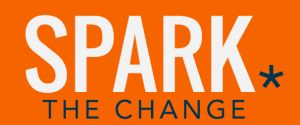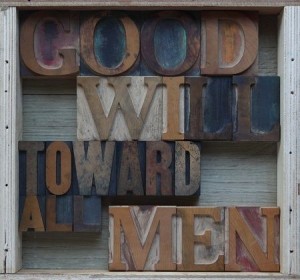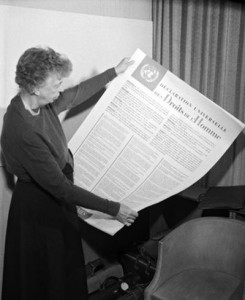by Susan Johnston | Mar 20, 2015 | Uncategorized |

With just over a month to go till the Spark The Change conference, I’ve been thinking a lot about change in the workplace.
As an organizational communicator – and even as a coach – my work has always been about change. “Everything is the same as it was yesterday,” is not a message I’ve ever sent, or even heard. While “no change” may be a true reflection of the situation, it’s not something we shout about. Even when we wish things would just stop changing for a second, while we catch our breath, we know it’s not realistic. When markets, environments, regulations, politics, consumer preferences, off-shoring, competitors, technology and a zillion other factors demand that we adjust and respond, not changing is not surviving.
But how do you do it?
We know what doesn’t work.
Scare tactics
When I first worked in change management, in the late 1980s, my organization hired high-priced consultants to tell us what to do. The prevailing idea was, “Scare people into changing.”
I recall the mantra, “Change or Be Changed.” I’m sure I wrote it into several executive speeches and articles for assorted publications. The idea was that, if we don’t voluntarily change the way we do things, something will come along and force us to do it. Might as well do it now than go kicking and screaming. Or maybe we could do it next week. What’s wrong with a good kick and scream?
We told stories about the “burning platform,” in which a worker caught on a blazing North Sea oil rig chose probable death over certain death, jumped off the drilling platform into the icy sea and was rescued. Only a blaze would have caused that behaviour change. This story was designed to get us to develop a sense of urgency around the need to change. But when employees look around and see that you have lots of customers, you’re raking in profits, nothing seems to be changing except the rhetoric and your CEO is taking a million dollar bonus, things don’t look particularly urgent.
One consultant trotted out my old friend Kurt Lewin, from Psychology 315 and his metaphor of ice. If you want the ice to change from a cube to a pyramid, you have to unfreeze and refreeze it in the new shape. (Could we use the burning platform to melt it?) We’d have to give up cherished beliefs about our selves and our organization and challenge the status quo. Not easy for executives and managers who were very well treated by the status quo. While we were sloshing around in that liquified state, waiting to refreeze into the new status quo, things would be chaotic, disordered and generally awful. No wonder people resist change.
Yes, we would meet resistance. Yet we knew (as the Borg kept telling us on Star Trek) “Resistance is futile.” The favoured model of resistance was the (Elizabeth) Kubler-Ross Grief Cycle, in which someone needs to pass through Denial, Anger, Depression and Bargaining to get to Acceptance. Why grief? Well the old ways were dead. We needed to mourn and move on. I remember thinking that, even though I understood the “why” for change and was 100 per cent behind the notion that we had to do it, I was, nevertheless, resisting. I wanted proof we would actually do it and that it would work. More than that, I wanted someone else to go first. I don’t think I got past Bargaining. And if I, the Change Girl, wouldn’t go, who else would?
Communication was acknowledged to be a key success factor or I wouldn’t have been involved. The why of the change wasn’t hard to describe. But what and how were a mystery. I’d prepare messages that reflected what employees wanted to hear, which was, “This is going to be hard but here’s how we’ll support you.” Then I’d prepare messages that reflected what executives wanted to say, which was mostly, “Bla bla bla.”
Appreciative Approach
What I wish we’d known about in those old days of “change management” was how to take an appreciative approach. Instead of scaring people into different behaviours, why not unleash them to find their own way? While we were freezing and burning and and resisting things, a grad student named David Cooperrider was “unfreezing” our notions of change. His process, Appreciative Inquiry, shifts organizational change from a problem to be solved to a creative endeavour. We ask questions about what’s working and have conversations about how we got that and how to get more. It sees the organization as organic, alive and able to change because it has done so in the past. By examining what is right and good, people are reminded of their abilities and resilience. They have more confidence and comfort to journey into the unknown future when they bring forward known parts of their past.
New ideas and tools
Appreciative Inquiry is just one of many tools we have today that we didn’t know about in the ’80s. We also have the benefit of knowing, thanks to advances in neuroscience, how human brains work. And we can talk about how we feel about change, thanks to the widespread acceptance of emotional intelligence as a factor in success.
I’m looking forward to Spark The Change, April 23, in Toronto where I expect to collide with people from diverse disciplines and types of organizations who want to create better workplaces. I’m anxious to hear new ideas from speakers who aren’t just talking about change, they’re doing it. I know we can create organizations that not only operate more successfully as enterprises but are also saner places to work.
by Susan Johnston | Dec 19, 2014 | Uncategorized |
 When I first studied accounting I was astonished that “goodwill” is something you can quantify and express with a financial value. I’d always thought of it as kind thoughts towards my fellow humans. Those are valuable, for sure, but not exactly something you can put a dollar sign on.
When I first studied accounting I was astonished that “goodwill” is something you can quantify and express with a financial value. I’d always thought of it as kind thoughts towards my fellow humans. Those are valuable, for sure, but not exactly something you can put a dollar sign on.
Along come generally accepted accounting principles (GAAP) to tell us that goodwill isn’t just about benevolent feelings towards others. It’s also the amount one company pays to buy another that’s over and above the tangible value of the assets being acquired. How could a company be worth more than its tangible assets? A strong brand, customer relationships, intellectual property and existing contracts might qualify as goodwill. It sits on the balance sheet as an intangible asset.
It’s interesting to ponder the value of goodwill during this season of “Gloria. Peace on Earth to men of goodwill.”
Goodwill, the kind thoughts variety, makes us worth much more than our tangible assets. It connects us to others, something we need to keep us human. There’s ample evidence of a link between the mind and the body that suggests positive thoughts and acts of generosity lead to more than just good feelings – they promote physical health. The explanation is that reciprocal benevolence kept our ancestors alive back in the days of “kill or be killed.” So we’re wired to be kind to each other.
You might argue that we don’t have to look far to find people whose learning or circumstances and choices override that basic human inclination towards goodwill. We see the impact of extremism and zealotry on the nightly news.
As I write that, I’m reminded of a quote from Anne Frank, who wrote, as she was hiding from the Nazis, “Despite everything, I believe that people are really good at heart.”
We can choose goodwill. Each of us can do our own bit to look for the best in others. As coaches, it’s our job to not only see their best but also to help them see it – and do something with it. Anne Frank said it best, “Everyone has inside of him a piece of good news. The good news is that you don’t know how great you can be! How much you can love! What you can accomplish! And what your potential is!”
This is a series inspired by House of Friendship Kitchener’s 12 Days for Good project. There’s a theme for each of the 12 days – no pipers piping required. Learn more at http://12daysforgood.com
by Susan Johnston | Dec 13, 2014 | Uncategorized |
 “Safe travels!” We hear that a lot, this time of year, when folks head off for the holidays. What does it mean to be safe?
“Safe travels!” We hear that a lot, this time of year, when folks head off for the holidays. What does it mean to be safe?
My first official memory of safety involves Elmer the Safety Elephant. We met him in kindergarten and he was a fixture in our primary and elementary school lives. Since “an elephant never forgets,” Elmer’s job was to remind us to be careful. He had his own flag and it was a big deal to help put up the Elmer flag every day, signalling that the school had been accident free. He had five safety rules:
- Look both ways before crossing the street.
- Don’t go between parked cars.
- Ride your bicycle safely and obey signs and signals.
- Play games in safe places, away from traffic.
- Walk, don’t run, when you leave the curb.
Elmer was born in Toronto in 1947, through a collaboration of the mayor, the police department and one of the daily newspapers. This vintage CBC video tells the story. (It’s worth a peek just to see the cars.) Child accidents declined and word spread across the nation. A national program followed and children in the hinterland, like me, got to meet him and learn and practise his five rules.
“Whatever happened to Elmer?” I wondered, this morning. Well, boys and girls, he’s still around. Like so many other celebrities, he’s had a facelift to counteract the effects of aging. And today, in addition to traffic safety, he now dispenses wisdom about fire safety, railway safety and Internet safety.
As adults, how do we channel our “inner Elmer?” Safe driving, snow tires, shovelled sidewaks, fresh batteries in the smoke detectors, holding the handrail and, yes, looking both ways – all these promote physical safety for ourselves and others.
I also think about another sort of safety.
- How do we make it safe for people to express themselves?
- How do we encourage people to listen to ideas with open minds?
- How do we encourage people to speak up about things that matter and ask questions about things that puzzle us without fear of being judged, labelled and dismissed?
One way to do that is to be conscious about our communication. We can assess the impact of our words before we speak them. We can share the intention that lies behind them. We can listen to understand, rather than simply to respond.
We create a climate of safety. Just like Elmer.
This is a series inspired by House of Friendship Kitchener’s 12 Days for Good project. There’s a theme for each of the 12 days – no geese-a-laying required. Learn more at http://12daysforgood.com
by Susan Johnston | Dec 12, 2014 | Uncategorized |
 I am about to wander downstairs and make shortbread, as generations of women in my family have done and will continue to do long after I am gone. Shortbread, fruitcake, mince tarts, pfeffernüsse, stollen, bûche de noël and tourtière are baked into our Christmas traditions with varying amounts of cinnamon, cloves, ginger, almonds and way too much butter.
I am about to wander downstairs and make shortbread, as generations of women in my family have done and will continue to do long after I am gone. Shortbread, fruitcake, mince tarts, pfeffernüsse, stollen, bûche de noël and tourtière are baked into our Christmas traditions with varying amounts of cinnamon, cloves, ginger, almonds and way too much butter.
Acknowledging that there are people in my family (and, perhaps, yours) who question whether fruitcake is food, or even edible, it’s safe to say that Christmas baking is about more than nourishing our bodies. We nourish traditions. We feed memories. We satisfy a craving for a time – real or imagined – when Christmas wasn’t about spending money but about spending time together.
When we nourish someone or something, we provide them with food and other things needed for health. We help them develop or grow stronger. Providing food is the most obvious form of nourishment. Today our local food bank put out a call for the most useful donations:
- Peanut Butter
- Beans in Sauce
- Canned Fish
- Canned Fruit
- Cold Cereal
We also nourish spirits, our own and others.
Music nourishes my spirit, especially this time of year when some really excellent music can be found. We learn to tune out the ubiquitous drone of ‘Santa Baby’ and ‘Jingle Bell Rock’ and track down the carols and anthems that have been treasured through decades, if not centuries. (Speaking of which, I cannot resist the opportunity to promote our concert, tomorrow evening.)
What nourishes your spirit? Meditation? Prayer? A walk in nature? A call from a friend?A call to a friend? I’m betting it’s not fruitcake.
It’s easy to lose track of that side of ourselves in the pre-holiday rush at work, the gifts, the greetings, the tree, the travel and, yes, even the baking.
What are you nourishing?
Who are you nourishing?
How can you nourish yourself?
This is a series inspired by House of Friendship Kitchener’s 12 Days for Good project. There’s a theme for each of the 12 days – no golden rings required. Learn more at http://12daysforgood.com
by Susan Johnston | Dec 11, 2014 | Uncategorized |
“You may say, “I don’t have a creative bone in my body.” Not true. We’re going to help you find that creative bone!”
Those are the words of Carolyn Dawn Good, a Kitchener artist and community catalyst I often describe as “the most creative person you will ever meet.” I write about her today for two reasons.
- One, it’s Day Four of the 12 Days For Good, in which House of Friendship reminds us that giving at this time of year isn’t just about presents. And Day Four = Creativity.
- Two, I spent a few hours with Carolyn, today, rolling paper beads. They will become works of art, like the angel pictured. And, yes, you can have one, too. (We were at The Generous Host, a lovely oasis of creative energy.)
There’s a story, of course, one of hope and transformation and drama and, yes, the involvement of a creative community.
It all began with a house fire in Carolyn’s downtown neighbourhood. It was a mess – not just the physical structure, but the financial picture and the impact on the family. The house had good bones and more than a few people saw possibility beyond the damage. Angels from the community, Carolyn among them, pulled together to mop up and begin repairs. The vision is not just to salvage this house but to transform it, and include a creative space the community can use.
Which brings me to the beads. The paper being transformed into angelic artwork is printed with photos taken just after the fire. From ashes to angels. Masterpieces from a mess. Horrifying to heavenly. Terror to treasure. I’ll stop the alliterative sloganeering, you get the picture. If not, here’s a real picture.
Carolyn is usin g the beads to create original numbered works of art – angels and stars to trim a tree, hang in a window, give as gifts, inspire your own creativity. And, you guessed it, most of the funds raised from sales will go to help fund the house restoration. Two-by-fours and two-by-sixes aren’t glamorous gifts, but they matter to builders. Angels sales will contribute.
g the beads to create original numbered works of art – angels and stars to trim a tree, hang in a window, give as gifts, inspire your own creativity. And, you guessed it, most of the funds raised from sales will go to help fund the house restoration. Two-by-fours and two-by-sixes aren’t glamorous gifts, but they matter to builders. Angels sales will contribute.
This project exemplifies creativity. People from all walks of life, businesses, builders, neighbours, strangers, individuals and communities opened their doors, their wallets, space on their calendars to bring this idea to life. Yes, creativity is in the artworks, themselves, and the artistry involved in the restoration. Yet creativity is also in seeing the possibility in situations around us.
Creativity is not just in the creative arts. Creativity is as useful in business as it is in the arts. A recent Fast Company article suggests the characteristics artists need and use are increasingly valuable in business.
As a coach and a trainer of coaches, I’m dedicated to the International Association of Coaching’s Mastery #8 – Invite possibility. When we see things from a new perspective, welcoming the unexpected, tugging on the threads not usually seen, we open up a range of creative options that help us transform our work, our lives and our world. “What else might be possible?” is a very powerful question.
All people are naturally creative and resourceful. Most of us are at our best when we are using our creativity. For some of us, our creative streak is in the arts. For others our creativity is not where society traditionally looks for it, but in finding new ways to get things done. We may be software developers, construction workers, barristas, municipal employees, parents or postal workers.
- Where is your creativity?
- How can you unleash it today?
This is a series inspired by House of Friendship Kitchener’s 12 Days for Good project. There’s a theme for each of the 12 days – Calling Birds required. Learn more at http://12daysforgood.com
by Susan Johnston | Dec 10, 2014 | Uncategorized |
 On December 10th, 1948, the international community, appalled by “barbarous acts which have outraged the conscience of mankind” they’d seen in World War II, vowed such atrocities would never happen again. They signed the Universal Declaration of Human Rights. It was designed to bolster the United Nations Charter (1945) with guidelines to guarantee the rights of individuals everywhere.
On December 10th, 1948, the international community, appalled by “barbarous acts which have outraged the conscience of mankind” they’d seen in World War II, vowed such atrocities would never happen again. They signed the Universal Declaration of Human Rights. It was designed to bolster the United Nations Charter (1945) with guidelines to guarantee the rights of individuals everywhere.
Were we to try to fit this document into a nutshell, we could select Article 3. “Everyone has the right to life, liberty and security of person.” The other 29 articles spell out more details of what violations look like, mention standard of living, education, even culture and specify that ‘everyone’ means everyone.
The way it’s supposed to work
In the 66 years since the declaration, dozens of international treaties, conventions and covenants have been signed and enacted. In signing these international treaties, national governments commit to respect, protect and fulfil human rights. The deal is that they must not interfere with or curtail these rights, they must protect people against human rights abuses and they must take action to facilitate basic human rights. These provisions are to be enshrined in domestic legislation. Should that fail, there are processes to take it to the international level.
Yet with frightening regularity, we hear regimes accused of human rights violations. Just last week, leaders of world religions gathered at the Vatican to declare the intention to eradicate slavery. The international news is filled with stories of rigged elections, limitation of free speech, abuses by security forces, arrests without trial, people tortured or disappearing. Around the world – and even in our own country – many women, especially, enjoy neither freedom nor security. Closer to home, people of all sorts experience discrimination and intolerance.
And we wonder, “What can someone like me do about this?”
- Notice the rights you enjoy.
- What do those rights mean to you?
- What would life be like without them?
- Which of your rights do you value the most?
- Where is someone fighting for that right?
- Where can you learn more about who is helping and how?
Every day can be Human Rights Day.
This is a series inspired by House of Friendship Kitchener’s 12 Days for Good project. There’s a theme for each of the 12 days – no French hens required. Learn more at http://12daysforgood.com







